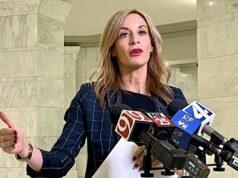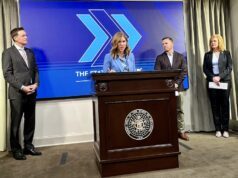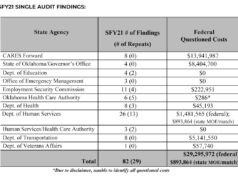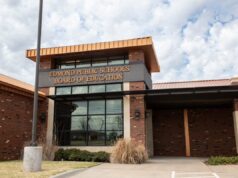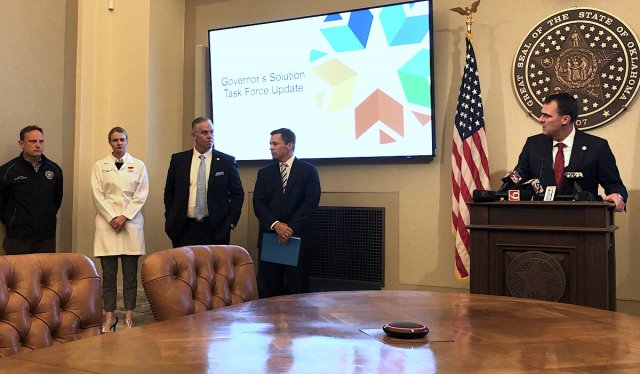

Outlining staggered dates of implementation and an emphasis on data monitoring, Gov. Kevin Stitt and four advisors today explained a three-phase approach to re-open Oklahoma businesses beginning May 1.
Stitt said his team’s plan will be a “careful and measured approach designed to protect our most vulnerable while safely easing Oklahomans back to work.”
Even before the three phases begin May 1, Stitt said “personal care businesses” like hair salons, barber shops, spas, nail salons and pet groomers will be able to open by appointment only Friday, April 24, if they encourage social distancing among customers and are not prohibited by municipal orders. In a Twitter thread immediately after Stitt’s remarks, Oklahoma City Mayor David Holt reminded OKC residents that the city’s shelter-in-place proclamation runs through Thursday, April 30.
Everybody’s sheltering for the weekend
Friday, May 1, will likely be a different story. The first phase to re-open Oklahoma will start then with restaurants, theaters, sports venues, churches and other entities being able to “open statewide if they adhere to strict sanitation and social distancing protocols.”
Asked if municipalities would still have the ability to force business closures or whether a state order will attempt to supersede that authority, Stitt said he will wait to explore that question until after May 1.
“We think that most of the mayors will line up with our orders on May 1, and we will cross that bridge on May 1 if we are seeing more restrictions,” Stitt said. “But right now, we are going to let some municipalities make some decisions before May 1, and then on May 1, it is our intent to really move to phase one all across the state. We think we have pretty much broad buy-in, and the data really confirms that because the whole goal of this was to protect our hospital capacity, was to get prepared for the surge and flatten that curve. As Oklahomans, we have done a fantastic job with that.”
Stitt said “phase two” of the plan to re-open Oklahoma would begin at the earliest on May 15.
“If our hospital and our incident rates remain manageable for 14 days, we will then move to phase two, but only if our data tells us it is time,” he said.
The data state leaders will be watching include active hospitalizations for COVID-19 (including those who have tested positive and those hospitalized with symptoms and presumed positive), a seven-day rolling average of new positive tests and comparisons to influenza trends over time.
“We look at a whole multitude of data points,” said Secretary of Health and Mental Health Jerome Loughridge. “As long as those (statistics) are staying at a manageable level, we will proceed to the next two-week period.”
As under phase one, phase two will still require senior citizens and those with compromised immune systems to follow statewide “safer-at-home” guidelines.
But the second phase will allow for the return of non-essential travel, nursery areas in houses of worship, organized sports and bars, so long as standing areas are restricted and social distancing and sanitation protocols are followed.
After 14 more days of encouraging hospitalization and epidemiological data, phase three would begin. Stitt said more details would be released about that phase at a later date.
“We will not move to [each subsequent] phase until the data tells us it is safe to do so,” Stitt said. “Even as things begin to open, it is so important that we continue to practice social distancing.”
Stitt said the plan to re-open Oklahoma “includes a significant focus on testing and tracing.”
“We know that this virus will continue to be around for a long time. We are not out of the woods yet,” he said. “We will continue to watch the data each day, and we will pull back if we need to.”
Three phases to re-open Oklahoma businesses
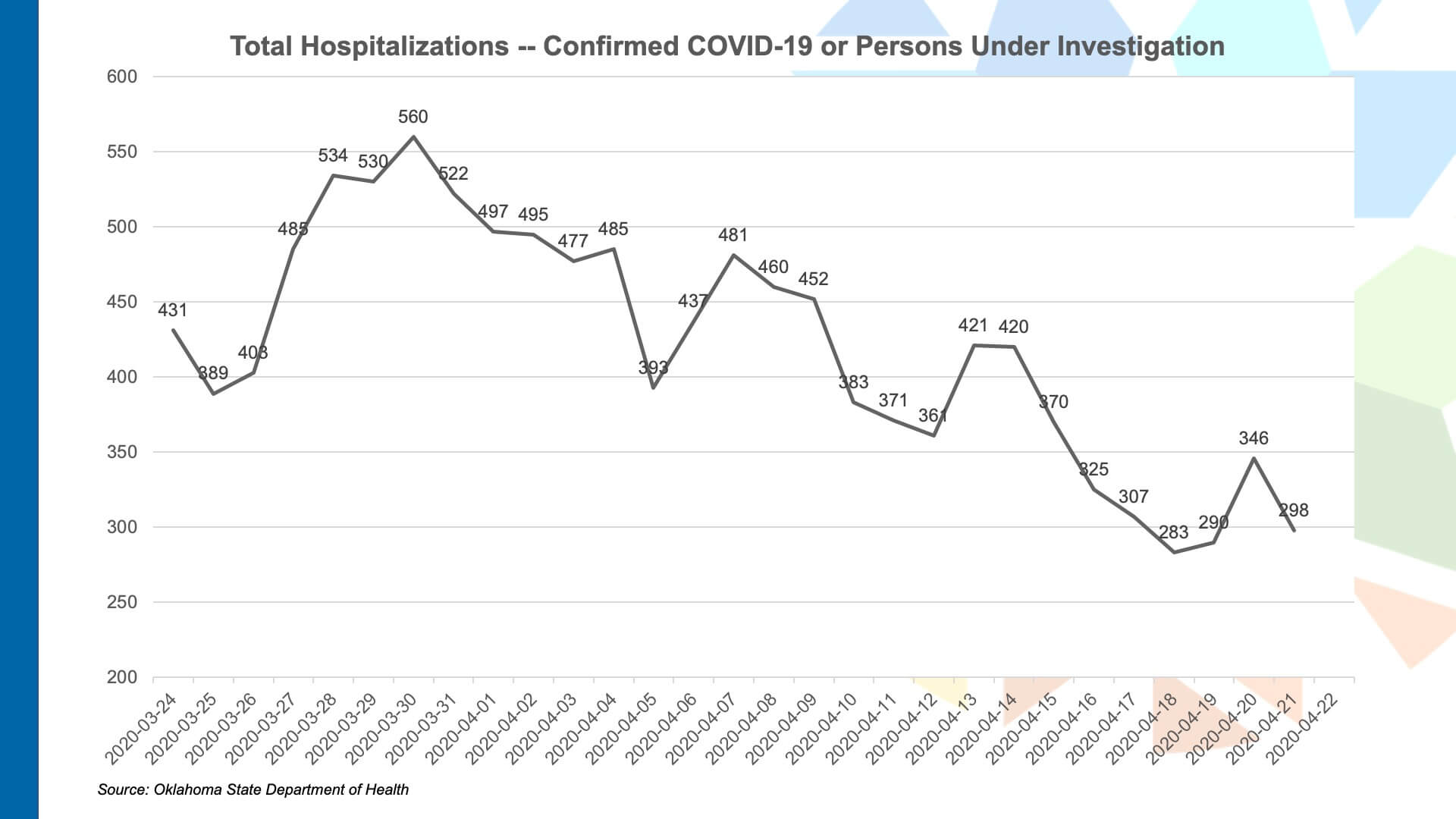
Stitt’s remarks Wednesday came almost one month after he announced the first version of his statewide safer-at-home order March 24, which applied to those 65 and older and those with medical conditions compromising their immune systems. He also implemented restrictions on “non-essential” businesses within counties showing community spread of COVID-19. A week later, on April 1, he announced an expansion of the business restrictions statewide.
Over that final week of March, several mayors of Oklahoma’s larger municipalities initiated shutdown orders at the local level that were often more restrictive than the statewide guidelines.
With Stitt saying his intent is to achieve “phase one” reopenings across the entire state beginning May 1, it’s unclear whether some cities will attempt to maintain restrictions for longer. ACLU of Oklahoma director Ryan Kiesel, an attorney and former member of the Oklahoma Legislature, said he was on a conference call with his legal team immediately after the governor’s announcement.
“I don’t think the governor in his constitutional powers or in the powers that he was recently granted by the Catastrophic Health Emergency Powers Act give him or the state government the ability to supersede public health restrictions in response to COVID-19 at the municipal level,” Kiesel said. “The [statute is] silent about any power that would give the governor the ability to tell a mayor to re-open their city if any particular mayor felt it wasn’t in keeping with public health guidance.”
Kiesel called the dynamic between state and local jurisdictions “bizarre” right now.
“I think it will be interesting to see what happens, especially in Oklahoma City and Tulsa,” he said. “The non-legal side of it is that if he’s setting this example as governor, what mayors are going to have the political clout to go against that? But I think it sets up a really dangerous scenario where mayors who feel they shouldn’t be re-opening will feel an insurmountable pressure to follow the governor’s lead and re-open, even if that’s not what those mayors want to do.”
House Minority Leader Emily Virgin (D-Norman) also said she is concerned about the May 1 timeline.
“The governor’s decision to reopen Oklahoma businesses early comes from a place of fear, and it is understandable for him to be worried about the long-term economic effects of this pandemic. However, in this time of uncertainty, it is crucial not to make decisions hastily and out of fear but out of fact,” Virgin said in a statement. “Furthermore, since the beginning of this crisis, we have failed to administer proper testing or tracing that is needed to ensure Oklahoma meets the CDC guidelines.”
Norman Mayor Breea Clark tweeted criticism of Stitt’s announcement shortly after the press conference ended.
“Why pick fights with the mayors, Gov. Stitt? Like OKC and Tulsa, Norman’s stay at home order will remain in place through [April 30],” she tweeted. “You may be willing to risk lives by moving forward without proper testing or a plan for contact tracing, but I’m not.”
Shrum: ‘We have tested over 45,000’
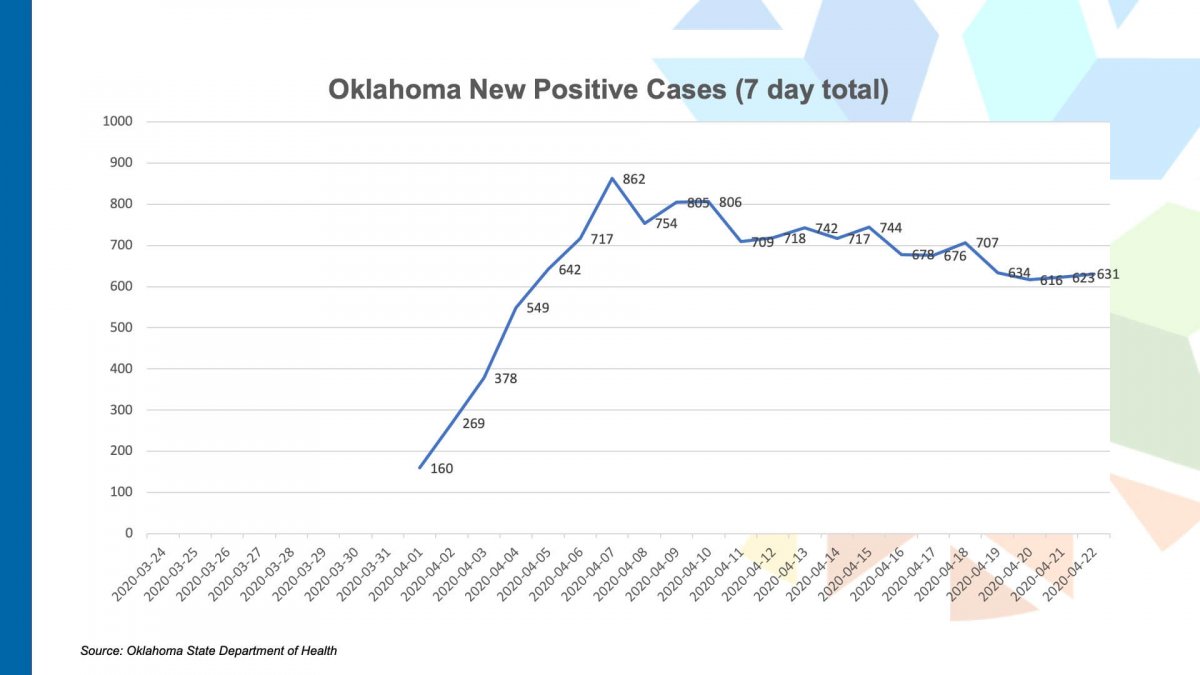
On the topic of testing, Secretary of Science and Innovation Dr. Kayse Shrum told media that the state’s capacity has increased dramatically.
“Our maximum capacity in the state for [polymerase chain reaction] testing daily is about 13,500, roughly,” Shrum said, noting that the PCR test’s 48-hour turnaround time depends on the availability of testing reagent.
Shrum said contracted laboratory results typically take two to five days and have a 33,000-test capacity.
“In mid-March, we were testing in the hundreds. Today we have tested over 45,000,” Shrum said, referencing more than 80 drive-thru testing sites across the state.
But Oklahoma State Medical Association President Dr. George Monks released a statement critical of the governor’s announcement.
“We are concerned Gov. Stitt’s plan to re-open the state is hasty at best. Even without widespread testing, Oklahoma has seen an ongoing growth in the number of cases, hospitalizations and deaths in the past week alone,” Monks said. “Oklahoma’s physicians nurses and other health care workers continue to care for those who are ill from this savage disease. To increase the danger of widespread infection by opening prematurely not only discounts their efforts, but also the sacrifices made by their loved ones.”
When it comes to re-opening the economy, Stitt emphasized the importance of increased testing and and an emphasis on tracing persons who have been in contact with a COVID-19 patient. To that end, he asked State Chamber of Oklahoma President and CEO Chad Warmington to discuss his role as chairman of the Governor’s Bounce Back Advisory Group, which is focused on the state economy.
“Once we get Oklahoma open safely, we can start talking about restoration of the economy,” Warmington said. “I think we are really ready to move onto the restoration part once we are open for business.”
Stitt emphasized his desire that Oklahomans continue to practice social distancing and wear masks if they go in public.
“There is light at the end of the tunnel, and it is starting to get brighter each single day as we do more testing and we continue to watch those curves flatten,” Stitt said. “So thank you Oklahoma for taking this seriously and doing your part to get to this point.”
Read the plan to re-open Oklahoma
